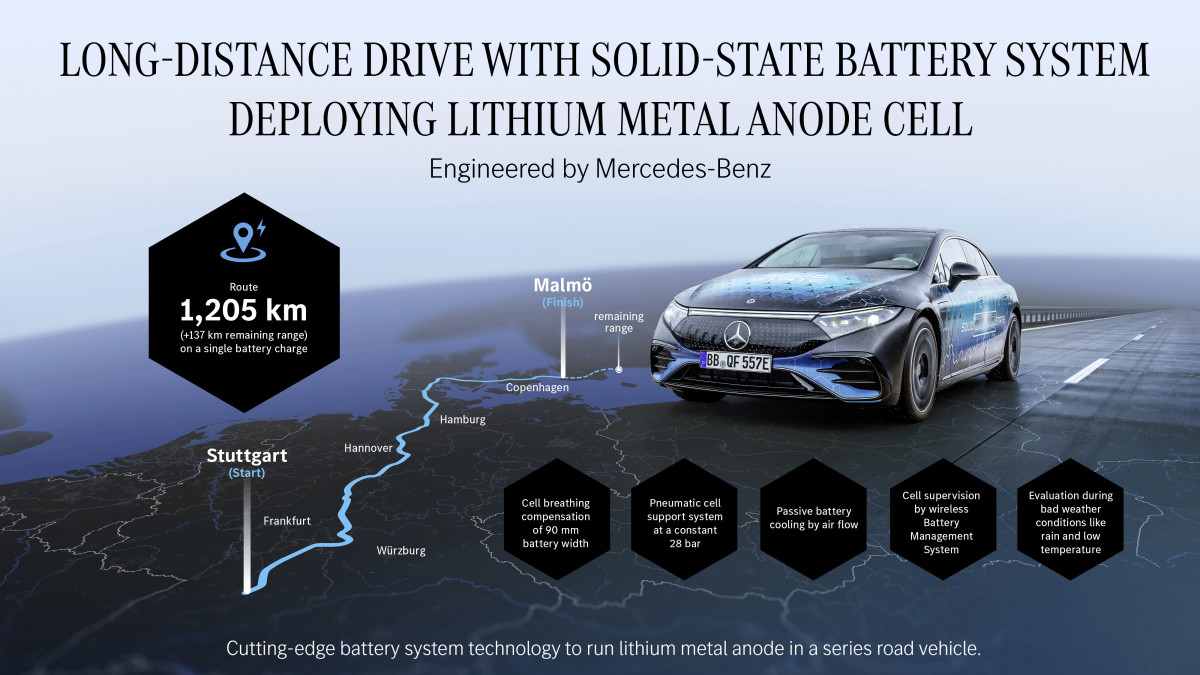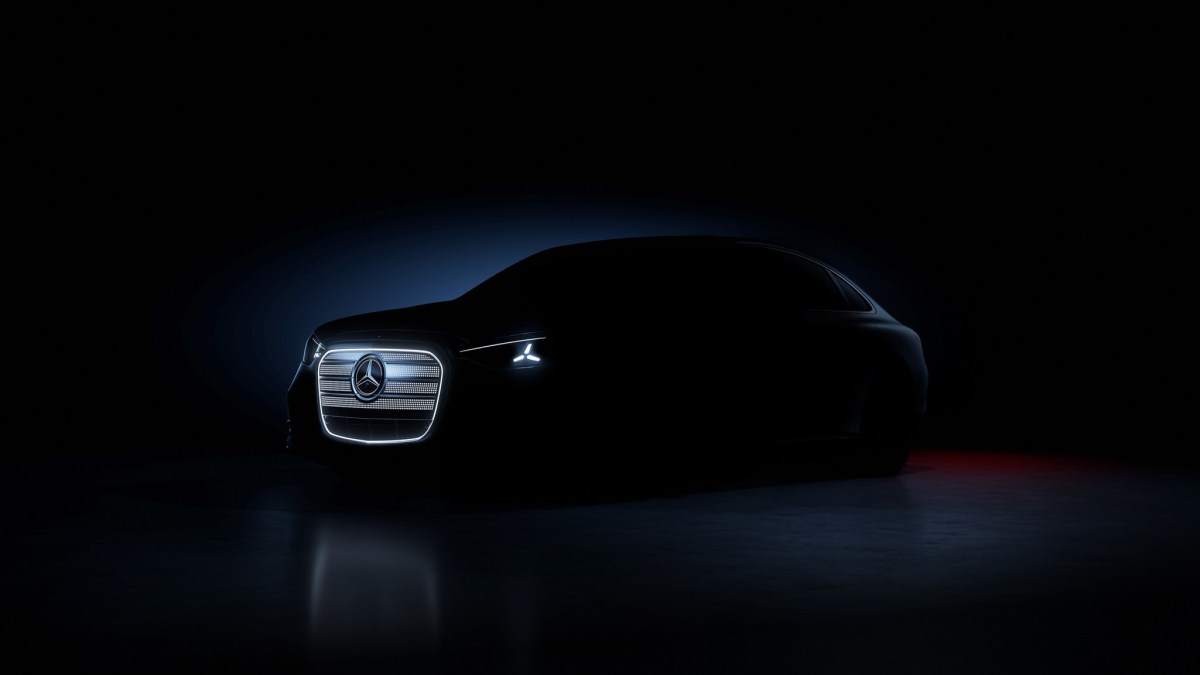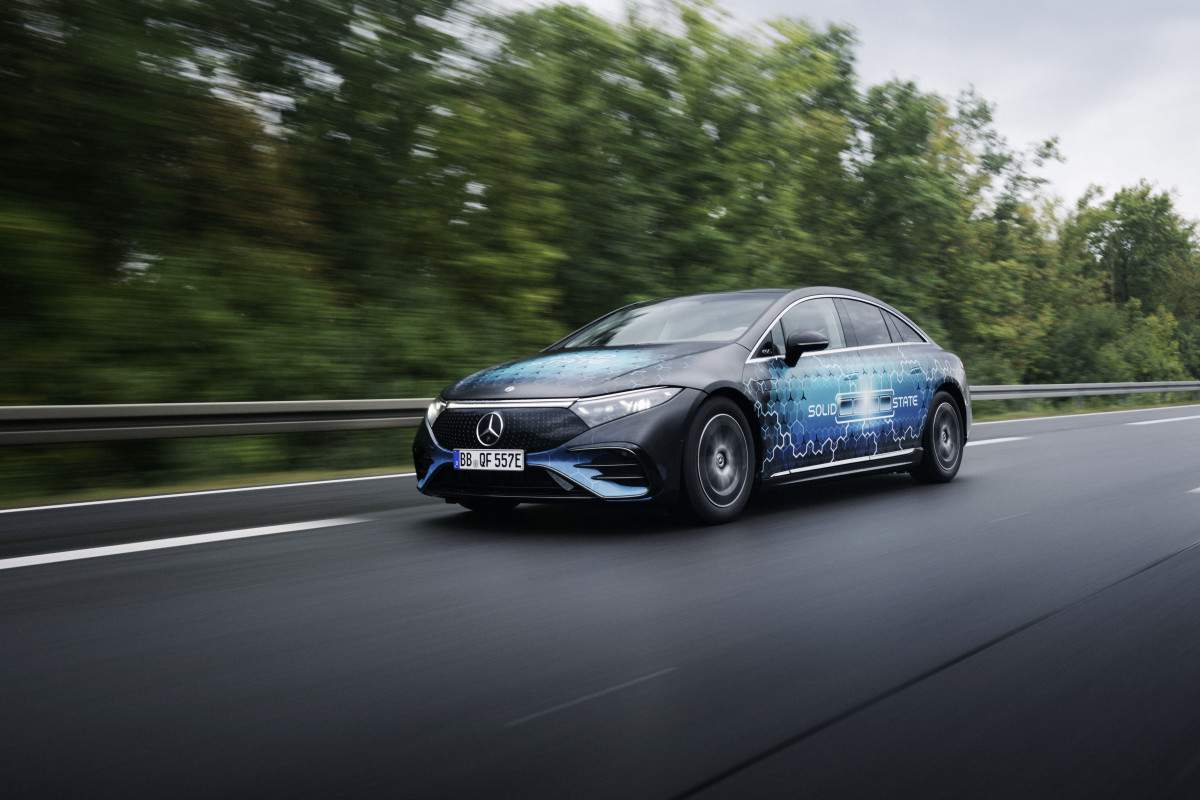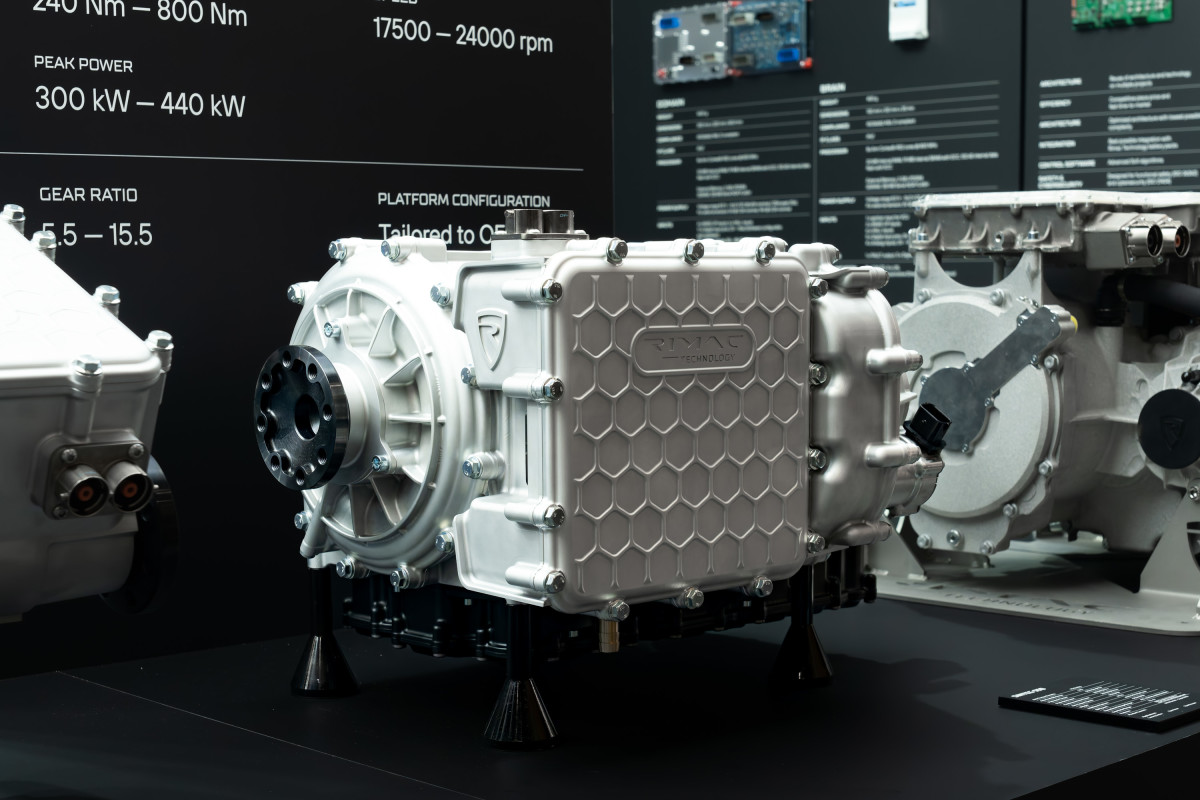Range anxiety may have just met its match. Mercedes-Benz has taken an EQS prototype fitted with a solid-state battery on a 749-mile run from Stuttgart to Malmö, and it still arrived with roughly 85 miles left in the pack. The achievement stands as one of the most impressive real-world demonstrations yet of what solid-state technology can deliver, hinting at a future where electric vehicles could rival or even surpass the convenience of gasoline-powered cars.

A Run to Prove the Point
The test wasn’t a carefully stage-managed loop; it was a cross-country trip through Germany and Denmark, guided by the brand’s Electric Intelligence navigation software, which factored in elevation changes, cabin climate control, and traffic. It was, in other words, a practical demonstration that makes today’s longest-range EVs look dated.
Mercedes CTO Markus Schäfer described the feat as “a true gamechanger for electric mobility,” framing it not as a lab experiment but a preview of what customers could expect within the next decade.

What Makes This Battery Different
Unlike the lithium-ion pack in today’s EQS, this prototype used lithium-metal solid-state cells developed with Factorial Energy. The pack stores about 25% more energy without adding weight or bulk, and uses pneumatic actuators to maintain consistent pressure on the cells during charging cycles—boosting both safety and longevity.
It’s the kind of breakthrough that shows why Mercedes isn’t giving up on traditional engineering either. CEO Ola Källenius has already stressed that the V12 isn’t dead yet, promising it will remain in production “into the 2030s.” Solid-state batteries and twelve-cylinder engines might seem worlds apart, but Mercedes is clearly betting on range and emotion side by side.

A Broader Electric Push
The EQS test comes amid a larger EV shift. Mercedes is preparing to launch its first all-electric C-Class in 2026, promising nearly 500 miles of range and a glowing LED grille. At the same time, it’s reviving heritage products like the G-Class Cabriolet to keep loyalists engaged.
Together, the moves show a company trying to balance the demands of an EV-led future with the timeless appeal of its legacy icons.

My Final Word
Covering 749 miles on one charge isn’t just a headline—it’s a signal. Mercedes has shown that solid-state batteries can unlock range that rivals gasoline cars, while still keeping the brand’s heritage alive through models like the V12-powered flagships and G-Class derivatives.
Mercedes is proving that the road to tomorrow’s EVs doesn’t mean abandoning the values that built its past.
via Autoblog https://ift.tt/618oOpR
September 10, 2025 at 03:08PM








